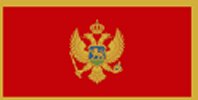 |
Montenegro |
 |
Montenegro |
In the 9th century, there were three principalities on the territory of Montenegro: Duklja, roughly corresponding to the southern half, Travunia, the west, and Rascia, the north. In 1042, archon Stefan Vojislav led a revolt that resulted in the independence of Duklja and the establishment of the Vojislavljevic dynasty. Duklja reached its zenith under Vojislav's son, Mihailo (1046–81), and his grandson Bodin (1081–1101). By the 13th century, Zeta had replaced Duklja when referring to the realm. In the late 14th century, southern Montenegro (Zeta) came under the rule of the Balšic noble family, then the Crnojevic noble family, and by the 15th century, Zeta was more often referred to as Crna Gora (Venetian: monte negro). Large portions fell under the control of the Ottoman Empire from 1496 to 1878. Parts were controlled by Venice. From 1515 until 1851 the prince-bishops of Cetinje were the rulers. The House of Petrovic-Njegoš ruled until 1918. From 1918, it was a part of Yugoslavia. On the basis of an independence referendum held on 21 May 2006, Montenegro declared independence on 3 June of that year.
When I arrived there in 2015 Montenegro became the 86th country I'd visited.
Click on the folder to have a larger version.